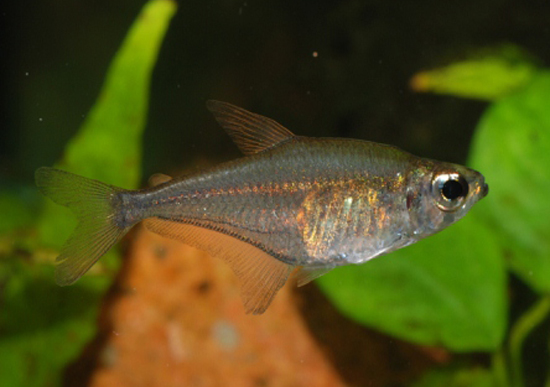| Acestrorhynchidae (Smallscale pike characins), subfamily: Heterocharacinae |
| 4.75 cm SL (male/unsexed) |
|
benthopelagic; freshwater, |
| South America: Essequibo and Demarara River basins; Amazon River basin and tributaries between Tapajós and Tefé rivers; upper Amazon River basin and Orinoco River basin. |
|
Dorsal soft rays (total): 9-9; Vertebrae: 35-35. Compared with H. virgulatus and H. leptogrammus, this species lacks the band of dark pigment dorsal to anal fin base (versus present); by its slightly upturned mouth with lower jaw somewhat prognathous (versus terminal mouth and more rounded snout). Distinguished further from H. virgulatus by its less pronounced longitudinal dark band running from posterior part of head to the caudal -fin base (versus a thicker and more heavily pigmented band); 4th and 5th infraorbitals represented by a single ossification (versus 2 separate elements); gill rakers on the epi-, hypo-, and cerato-branchial (anterior portion) of the first branchial arch are more developed; a small posterior dentary teeth beginning posterior to lateralmost tooth of the anterior series thus not forming a second internal teeth series; possess a more pointed posteroventral corner on the preopercle, and a relatively smaller orbital diameter and interorbital distance. Distinguished further from H. leptogrammus by having a deeper and more diamond-shaped body (versus elongate and slender); and, this species has typically higher counts for lateral -line scale and anal-fin rays (Ref. 38319). |
|
|
Least Concern (LC); Date assessed: 02 April 2020 Ref. (130435)
|
| harmless |
Source and more info: www.fishbase.org. For personal, classroom, and other internal use only. Not for publication.

